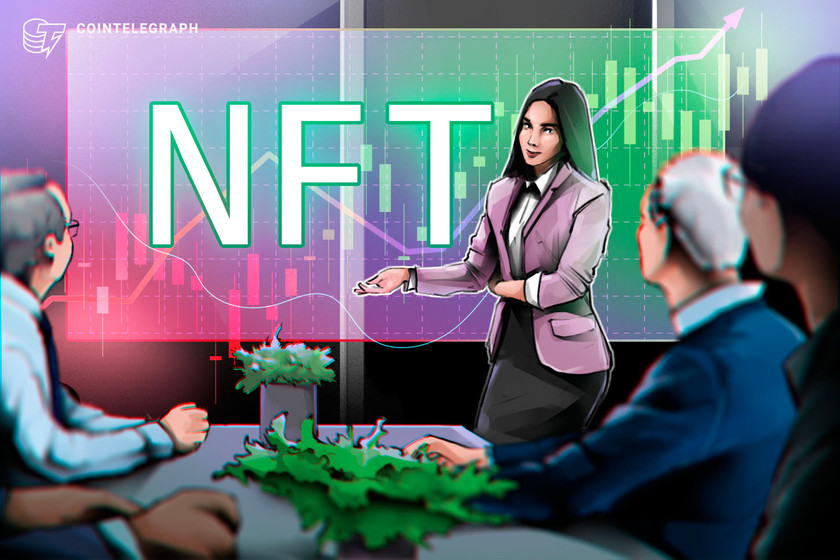Improving Bitcoin NFT marketplace infrastructure sets the stage for ecosystem growth


Bitcoin NFT inscription activity continues to rise and the launch of new BTC specific marketplaces could lay the groundwork for the next hype cycle.
Bitcoin NFT inscription activity has remained strong with consistency in the daily number of NFTs inscribed on Bitcoin. At the same time, the infrastructure to foster Bitcoin trading is finally coming together with the development of wallets and marketplaces supporting Ordinals.
NFT marketplaces, Gamma and Magic Eden, added support for Bitcoin NFTs this week. While the initial response of traders has been subdued, the activity is expected to pick up soon.
Improving the infrastructure around Bitcoin NFTs
Bitcoin NFTs, also-known-as Ordinals, began with much fanfare in late January as they enhanced the utility and revenue of the Bitcoin blockchain.
Dune dashboard from data analyst dgtl_assets shows that the Ordinals inscription activity remains robust, with nearly 580,000 NFTs inscribed in less than three months.
While the daily inscription activity is vigorous, the trading volume of Bitcoin NFTs is still muted, which can be primarily attributed to the absence of Bitcoin wallets and supporting marketplaces.
Ordinals require a specially designed Bitcoin wallet that recognizes content files on discernable satoshis, the smallest unit of Bitcoin, and facilitates its transfer. Hiro and Xverse are the leading wallet providers in the space.
Mark Hendrickson, the product lead at Hiro, told Cointelegraph that the “active users for the wallet are up significantly in general this year, around 350%.” The activity picked up significantly since February, thanks to the Ordinals hype.
On the other hand, Xverse added Bitcoin NFT support on February 15.
So far, the Xverse Chrome browser extension has been downloaded on over 10,000 browsers, with Hiro’s download numbers surpassing 90,000. The Hiro wallet enjoys an advantage here as it was initially designed for the Stacks blockchain, a Bitcoin sidechain that supports smart contract ability.
Marketplaces come together
Since March 19, there has been considerable improvement in the space, with two leading marketplaces, Gamma and Magic Eden, beginning to support Ordinals trading on March 20 and March 22. So far, the marketplaces have met with a soft opening with less than $1 million in trading volume on both venues.
In comparison, OpenSea has facilitated more than $10 million in daily trading volume on Ethereum NFT trades alone on most days in the first quarter of 2023.
Gamma users have completed around 182 Bitcoin NFT purchases since launch. Whereas Magic Eden has done close to 18.94 BTC (worth around $530,000) volume since launch, with the Bitcoin DeGods collection dominating volumes by 67%.
Related: Stacks (STX) surges as Bitcoin NFT hype grows, but its blockchain activity raises concern
Additionally, Hendrickson noted that Magic Eden enjoys an advantage in “the cross-protocol department given that they’ve previously rolled out support for Solana, Ethereum and Polygon. This could help serve cross-chain trading needs faster, especially as demand increases for moving liquidity across chains to access their various NFT markets.”
At the same time, he noted that “Gamma has an advantage among Ordinals marketplaces given their deep focus on Bitcoin-based technologies.” Data provided by Hendrickson shows that the number of Hiro users interacting with Gamma surged significantly to around 2,144 weekly users as the hype around Bitcoin NFTs kicked off.
The Bitcoin NFT trading activity is expected to pick up. Ordinals provide superior security guarantees than NFT ecosystems elsewhere. The digital media file of Ordinals is stored directly on the Bitcoin blockchain and enjoys the same security guarantees as regular BTC transfers. Whereas other ecosystems like Ethereum store the content file of the NFT on third-party storage solutions like AWS and IFPS. Hendrickson noted, “Their long-term durability is a huge advantage.”
The views, thoughts and opinions expressed here are the authors’ alone and do not necessarily reflect or represent the views and opinions of Cointelegraph.
This article does not contain investment advice or recommendations. Every investment and trading move involves risk, and readers should conduct their own research when making a decision.















